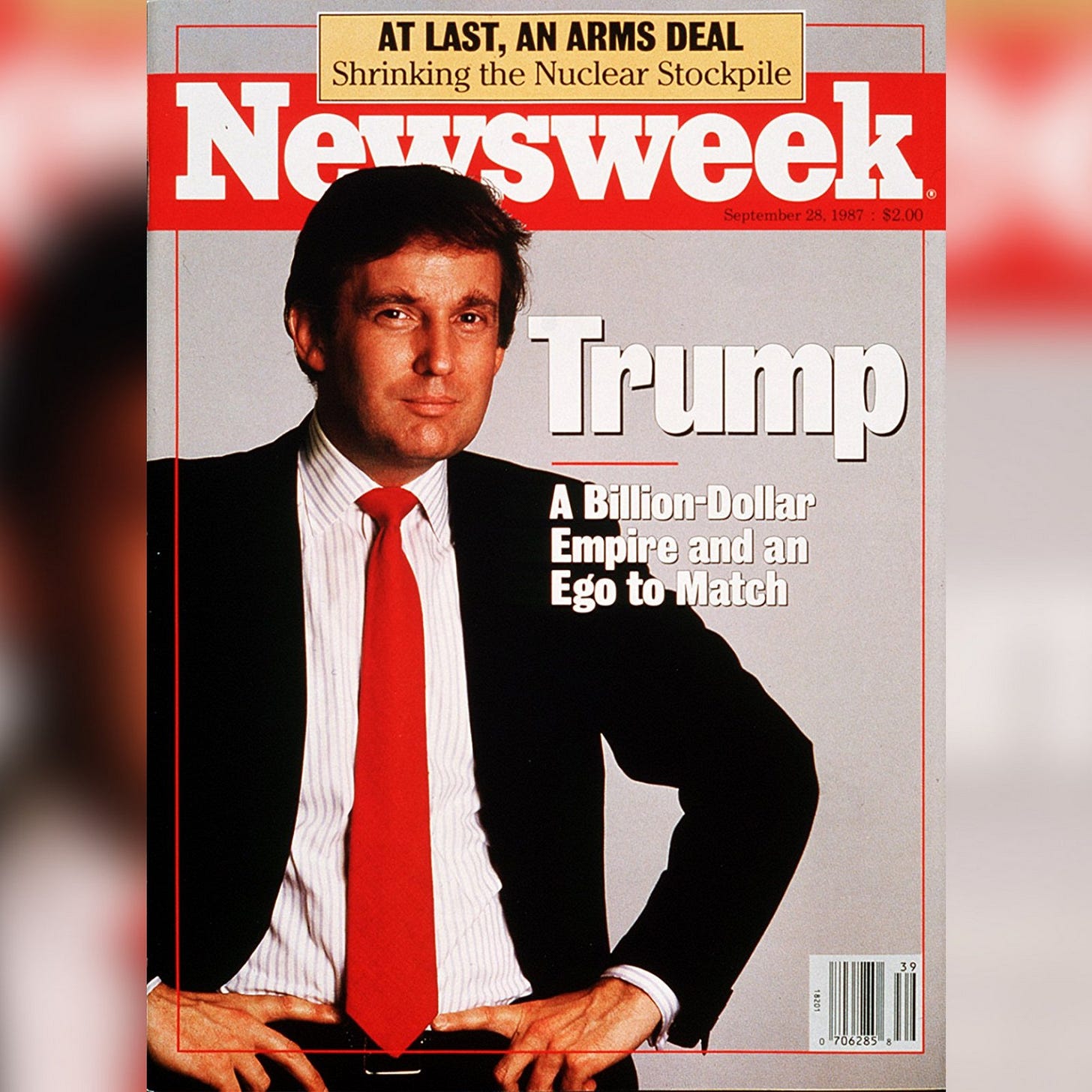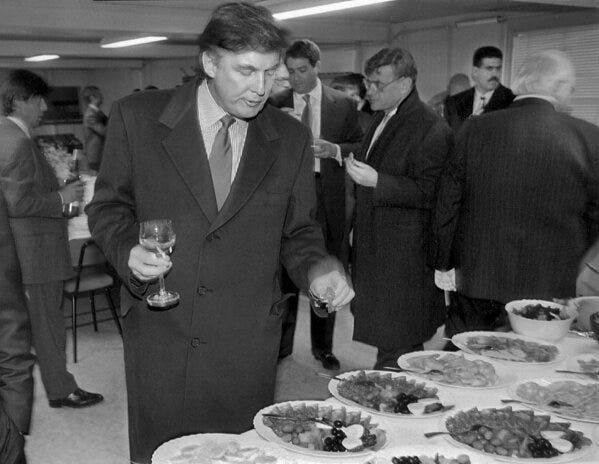THE GREATEST HEIST: Chapter 7 - The Cultivation of Donald Trump
It took the KGB 12 years to construct Donald Trump as an asset. This is how they did it.
Donald Trump slipped off his shoes to board Robert Maxwell's Lady Ghislaine. Everyone had to—Maxwell insisted. He claimed it was about protecting the plush carpeting, but at 6'1" and 300 pounds, Maxwell enjoyed the power advantage of towering over his guests—a giant among the shoeless, literally looking down on everyone.
The photograph would ricochet through intelligence agencies from Langley to London to Moscow like a tracer round. This was no ordinary cocktail gathering. This was the culmination of one of Maxwell's biggest coups.
Between 1970 and 1991, the KGB systematically infiltrated Western financial systems, orchestrating history's largest theft of state assets—$50 billion in Communist Party funds transferred through 7,000+ accounts and 84 companies. As defector Yuri Bezmenov revealed, 85% of KGB work focused on "ideological subversion and economic destabilization" rather than traditional espionage. Maxwell was their crucial Western facilitator, simultaneously serving as George Bush Sr.'s CIA backchannel while taking 15-20% commissions for laundering Soviet assets through his partnership with Semion Mogilevich, the FBI's future most-wanted Russian crime boss.
But to complete this economic warfare strategy, they needed the perfect American mark—someone who could make Soviet money look like American success, take their cash without questions, and grow prominent enough to normalize corruption.
In 1977, they found him. Or rather, they began constructing him.
By 1989, Trump—standing shoeless on that yacht—was exactly what they had spent twelve years constructing: the ideal American vessel for Soviet money, transformed from a minor New York developer into someone prominent enough to launder billions without anyone asking questions.
The Assessment: "Born to Be Recruited"
Former KGB officer Yuri Shvets told me, "The decision was made by at least '83, that it's time to establish a direct contact with Donald Trump from somebody from Russian New York rezidentura."
The psychological profile that emerged was devastating. Intelligence services worldwide use a framework called MICE—Money, Ideology, Compromise, Ego—to assess potential assets. Trump scored off the charts on three of the four. And the missing one—ideology—actually made him more valuable, not less.
"Extreme vanity." Trump needed to be seen as successful, brilliant, winning. Recognition was his oxygen. Tell him he was exceptional, and he became remarkably receptive to suggestion.
"Extremely low IQ." Not academically—operationally. Trump couldn't see three moves ahead. He couldn't recognize patterns that intelligence professionals are trained to spot. As Shvets put it: "The guy is not a complicated cookie, his most important characteristics being low intellect coupled with hyperinflated vanity. This combination makes him a dream for an experienced recruiter."
"Extreme narcissism." Everything was viewed through the lens of how it affected Trump. Every deal, every relationship, every interaction was measured by how it reflected on him.
"Extreme love to flattery." The Moscow trip would prove this. Ambassador Dubinin's daughter Natalia recalled: "Trump melted at once. He is an emotional person, somewhat impulsive. He needs recognition. And, of course, when he gets it he likes it. My father's visit worked on him like honey on a bee."
"And greed." The drive to accumulate, to expand, to build empire after empire. Money was the scorecard, and Trump played to win at any cost.
"You have it all there," Shvets concluded. "Everything in this guy, everything is out of place, out of proportion. Everything is exaggerated."
These weren't just personality traits. They were operational opportunities. And the KGB had spent decades learning how to exploit exactly these characteristics in their targets. In intelligence terms, Trump was a perfect MICE candidate.
1977: The Czech Opening
The cultivation began with a woman who appealed to Trump's first vulnerability: his need for prestige.
Ivana Zelníčková claimed to be an alternate on the Czechoslovak Olympic ski team. She wasn't—though Don Jr. would later repeat the story about his mother. When she and Donald Trump wed in April 1977, her Olympic narrative had been carefully messaged and enhanced for Western consumption. Nothing less than an Olympic athlete, and how fitting that the newlyweds would settle in the Olympic Tower at 641 Fifth Avenue.
What Trump didn't know—what his vanity prevented him from seeing—was that Ivana came from Zlín (then called Gottwaldov after the Stalinist president), where travel to the West required special permissions and often cooperation with intelligence services. She was sending messages back to Prague through her father, Miloš Zelníček, to the StB, Czechoslovakia's intelligence service.
As Yuri Shvets revealed: "Everybody who wanted to immigrate to America was approached by the KGB with blackmail. Either you signed a handwritten note pledging to cooperate with the KGB, or you don't go anywhere."
The vain American real estate developer who believed he'd won an Olympic beauty was actually playing a role in a carefully orchestrated intelligence operation, one he never suspected. The KGB now had eyes inside Trump's home, his business, his entire world.
Subscribe to unlock the full investigation of how Soviet intelligence constructed Trump as their ideal money laundering vehicle—documented with FBI files, court records, and KGB officer testimony.
Keep reading with a 7-day free trial
Subscribe to Narativ with Zev Shalev to keep reading this post and get 7 days of free access to the full post archives.





